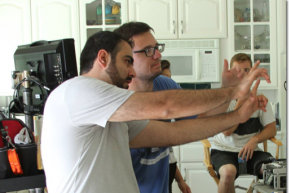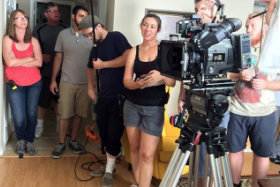My rule of thumb is 3 to 3 ½ pages a day, with 4 pages a day being the absolute maximum
You can save time and money on a low budget film. A lot of low budget indie films have insane shooting schedules; with upwards of 9 pages a day. While I understand the financial and logistical constraints that create these types of schedules, they’re rarely realistic. My rule of thumb is 3 to 3 ½ pages a day, with 4 pages a day being the absolute maximum. The benefits of a low page count are undeniable. The cinematographer will have more time to light the scene. The director can take his or her time with the actors. And both parties can shoot as many takes as necessary before moving onto the next shot. In short, more time = better quality. If your budget doesn’t allow for this, the first step I would take would be to shorten the overall page count of the script. The difference between your indie film and a large television show, mainly, is the money. They have deep pockets that allow for highly experienced crews, well over 100+ employees, multiple cameras, and they typically run into 4+ hours of overtime per day. With enough money, anything is possible. Fine. But what if I can’t cut the script? I get it. As an indie filmmaker, cutting the script may simply not be an option — or maybe you’ve trimmed as much as possible and there’s simply nothing more your can scrape out of the story. This is an understandable problem, and one that can only be solved with strong communication between the director, producer, 1st AD and cinematographer. So what’s the secret? Don’t cut your page count — cut your shot list. On the last project I produced, The Big Day, we shot an average of 19 shots a day for 3 pages of film. This type of coverage was great to have in the editing room, but we certainly could have gotten away with less. If you’re on a tight budget and MUST shoot a page count in excess of 7 pages, adjust your shot list accordingly. For example, rather than covering a single page of content with 5 to 6 shots — cover the same material with an average 2 to 3 shots per page. Keep in mind that this is an average, some pages will dictate more coverage than others. The key is to carefully determine which pages can be covered in mostly a wide shot, and which pages will need more detailed visuals. If you have any other questions about film scheduling or just want to talk movies, feel free to reach out to me directly via my website at www.MelissaIzbicki.com. I’d also be eternally grateful if you’d check out my latest film The Big Day on our Official Facebook Page. Follow Melissa on Twitter @MelissaIzbicki I know, I know…. five director/writers somewhere in the world just screamed out in terror… and at least one of you flippantly remarked that “TV shows get away with over-sized page counts all the time… why can’t I?”
I know, I know…. five director/writers somewhere in the world just screamed out in terror… and at least one of you flippantly remarked that “TV shows get away with over-sized page counts all the time… why can’t I?” This is obviously not an ideal scenario, but it will, however save you significant time and money; not to mention raising your overall production value by permitting the cinematographer and director enough time to properly do their jobs.
This is obviously not an ideal scenario, but it will, however save you significant time and money; not to mention raising your overall production value by permitting the cinematographer and director enough time to properly do their jobs. Melissa Izbicki is a narrative and commercial film producer located in Los Angeles, California. Izbicki graduated from Chapman University’s Dodge College of Film and Media Arts with an emphasis in producing and is currently an MBA candidate at Chapman University’s Argyros School of Business and Economics. Her latest feature film, The Big Day, is scheduled for release in late 2016. For more details, visit www.TheBigDayMovie.com
Melissa Izbicki is a narrative and commercial film producer located in Los Angeles, California. Izbicki graduated from Chapman University’s Dodge College of Film and Media Arts with an emphasis in producing and is currently an MBA candidate at Chapman University’s Argyros School of Business and Economics. Her latest feature film, The Big Day, is scheduled for release in late 2016. For more details, visit www.TheBigDayMovie.com
Richard Green Documentary, ‘I Know Catherine, The Log Lady’: Premiere in NYC, LA May 9th
Lynchian Doc I Know Catherine, The Log Lady Makes Hollywood Premiere 4/17, Rollout to Follow
In Camera by Naqqash Khlalid Launch on VOD April 29
Naqqash Khlalid’s Directs Nabhan Rizwan. In Camera stars an EE BAFTA Rising Star Award Nominee.





